CALL US NOW :
MAILING ADDRESS :
LOCATION ADDRESS :
Plot no.2, Gurudwara Road, Mumbai Naka,
Nashik
Headache Migraine
Introduction to Headache Migraine
Headache Migraine
Overview
A migraine is a headache that can cause severe throbbing pain or a pulsing sensation, usually on one side of the head. It’s often accompanied by nausea, vomiting, and extreme sensitivity to light and sound. Migraine attacks can last for hours to days, and the pain can be so severe that it interferes with your daily activities.
For some people, a warning symptom known as an aura occurs before or with the headache. An aura can include visual disturbances, such as flashes of light or blind spots, or other disturbances, such as tingling on one side of the face or in an arm or leg and difficulty speaking.
Medications can help prevent some migraines and make them less painful. The right medicines, combined with self-help remedies and lifestyle changes, might help.
Symptoms
Migraines, which affect children and teenagers as well as adults, can progress through four stages: prodrome, aura, attack and post-drome. Not everyone who has migraines goes through all stages.
Prodrome
One or two days before a migraine, you might notice subtle changes that warn of an upcoming migraine, including:
- Constipation
- Mood changes, from depression to euphoria
- Food cravings
- Neck stiffness
- Increased urination
- Fluid retention
- Frequent yawning
Aura
For some people, an aura might occur before or during migraines. Auras are reversible symptoms of the nervous system. They’re usually visual but can also include other disturbances. Each symptom usually begins gradually, builds up over several minutes and can last up to 60 minutes.
Examples of migraine auras include:
- Visual phenomena, such as seeing various shapes, bright spots or flashes of light
- Vision loss
- Pins and needles sensations in an arm or leg
- Weakness or numbness in the face or one side of the body
- Difficulty speaking
Attack
A migraine usually lasts from 4 to 72 hours if untreated. How often migraines occur varies from person to person. Migraines might occur rarely or strike several times a month.
During a migraine, you might have:
- Pain usually on one side of your head, but often on both sides
- Pain that throbs or pulses
- Sensitivity to light, sound, and sometimes smell and touch
- Nausea and vomiting
Post-drome
After a migraine attack, you might feel drained, confused and washed out for up to a day. Some people report feeling elated. Sudden head movement might bring on the pain again briefly.
When to see a doctor
Migraines are often undiagnosed and untreated. If you regularly have signs and symptoms of migraine, keep a record of your attacks and how you treated them. Then make an appointment with your doctor to discuss your headaches.
Even if you have a history of headaches, see your doctor if the pattern changes or your headaches suddenly feel different.
See your doctor immediately or go to the emergency room if you have any of the following signs and symptoms, which could indicate a more serious medical problem:
- An abrupt, severe headache like a thunderclap
- Headache with fever, stiff neck, confusion, seizures, double vision, numbness or weakness in any part of the body,
- which could be a sign of a stroke
- Headache after a head injury
- A chronic headache that is worse after coughing, exertion, straining or a sudden movement
- New headache pain after age 50

Causes
Though migraine causes aren’t fully understood, genetics and environmental factors appear to play a role.
Changes in the brainstem and its interactions with the trigeminal nerve, a major pain pathway, might be involved. So might imbalances in brain chemicals — including serotonin, which helps regulate pain in your nervous system.
Researchers are studying the role of serotonin in migraines. Other neurotransmitters play a role in the pain of migraine, including calcitonin gene-related peptide (CGRP).
Migraine triggers
There are a number of migraine triggers, including:
- Hormonal changes in women. Fluctuations in estrogen, such as before or during menstrual periods, pregnancy and menopause, seem to trigger headaches in many women. Hormonal medications, such as oral contraceptives, also can worsen migraines. Some women, however, find that their migraines occur less often when taking these medications.
- Drinks. These include alcohol, especially wine, and too much caffeine, such as coffee.
- Stress. Stress at work or home can cause migraines.
- Sensory stimuli. Bright or flashing lights can induce migraines, as can loud sounds. Strong smells — such as perfume, paint thinner, secondhand smoke and others — trigger migraines in some people.
- Sleep changes. Missing sleep or getting too much sleep can trigger migraines in some people.
- Physical factors. Intense physical exertion, including sexual activity, might provoke migraines.
- Weather changes. A change of weather or barometric pressure can prompt a migraine.
- Medications. Oral contraceptives and vasodilators, such as nitroglycerin, can aggravate migraines.
- Foods. Aged cheeses and salty and processed foods might trigger migraines. So might skipping meals.
- Food additives. These include the sweetener aspartame and the preservative monosodium glutamate (MSG), found in many foods.
Risk factors
Several factors make you more prone to having migraines, including:
- Family history. If you have a family member with migraines, then you have a good chance of developing them too.
- Age. Migraines can begin at any age, though the first often occurs during adolescence. Migraines tend to peak during your 30s, and gradually become less severe and less frequent in the following decades.
- Sex. Women are three times more likely than men to have migraines.
- Hormonal changes. For women who have migraines, headaches might begin just before or shortly after onset of menstruation. They might also change during pregnancy or menopause. Migraines generally improve after menopause.
Book Your Appointment To Get Quality Services From Us!
Our Biyani Neurocare Clinic is dedicated to provide the most up to date general, health and family neurocare.
Our Services
-
Vertigo
-
Movement Disorder
-
Autoimmune and Demyelinating Diseases
-
Neuroopthalmology
-
Neck and Lower back pain
-
Headache Migraine
Our Services
Support
Connect Us
- Plot no. 2, Gurudwara Road, Mumbai Naka, Nashik
-
(+91) 703-007-4740
-
sumantbiyani@gmail.com
Copyright 2023 © All Right Reserved || Website Design by – iMorse Technologies Pvt. Ltd.

